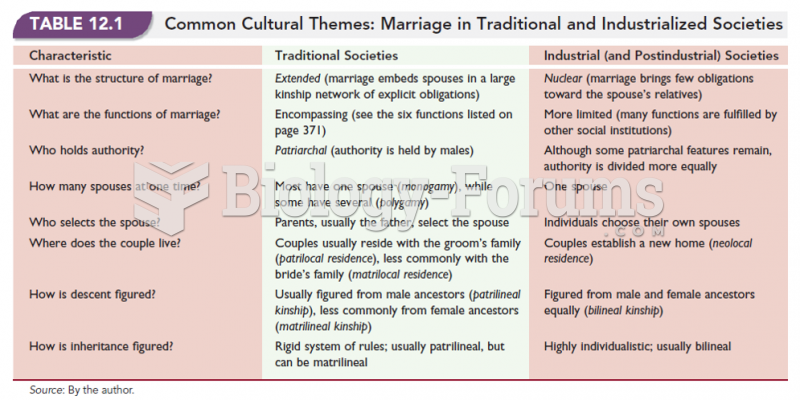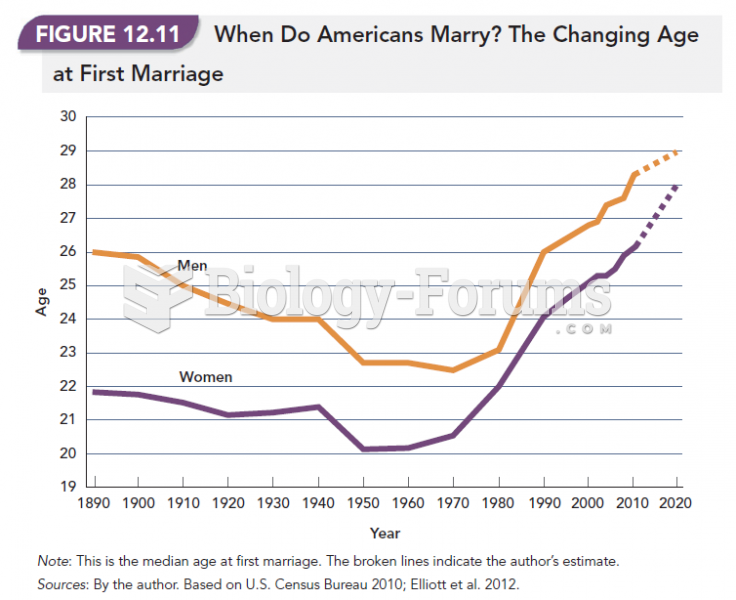Answer to Question 1
The variables that predict whether a marriage will or will not last are:
Age of spouses: Divorce is most likely to occur when the partners are in their 20s.
Length of engagement: Divorce rates are higher for those who had a brief engagement.
Age at marriage: People who marry at a very young age (particularly teenagers) are more likely to divorce.
Length of marriage: Most divorces occur within 3 years after marriage. There is also an increase in divorce shortly after the children are grown. This may occur partly because some couples wait until their children leave the nest before dissolving an unhappy marriage.
Social class: Divorce occurs more frequently at the lower socioeconomic levels.
Education: Divorce rates are higher for those with fewer years of schooling. Interestingly, divorce occurs more frequently when the wife's educational level is higher than the husband's.
Residence: Divorce rates are higher in urban areas than in rural areas.
Second marriages: The more often individuals marry, the more likely they are to get divorced again.
Religion: The more religious individuals are, the less likely they are to divorce. Divorce rates are higher for Protestants than for Catholics or Jews. Divorce rates are also higher for interfaith marriages than for same faith marriages.
Answer to Question 2
There are many sources of marital breakdown: alcoholism, economic strife caused by unemployment or other financial problems, incompatibility of interests, infidelity, jealousy, verbal or physical abuse of spouse, and interference in the marriage by relatives and friends. Many people marry because they believe they are romantically in love. If this romantic love does not grow into rational love, the marriage is likely to fail. Unfortunately, young people in our society are socialized to believe that marriage will bring them continual romance, resolve all their problems, and be sexually exciting, thrilling, and full of adventure. In actuality, living with someone in a marriage involves carrying out the garbage, washing dishes and clothes, being weary from work, putting up with one's partner's distasteful habits, changing diapers, and dealing with conflicts over such things as finances and differences in sexual interests.
Another factor that is contributing to an increasing divorce rate is the unwillingness of some men to accept the changing status of women. Women who are able to support themselves financially are more likely to seek a divorce if their marriages go sour. Another factor contributing to the increasing divorce rate is the growth of individualism. Individualism involves the belief that people should seek to actualize themselves, to be happy, to develop their interests and capacities to the fullest, and to fulfill their own needs and desires. The interests of the individual take precedence over those of the family.
Yet another reason for the rise in the divorce rate is the growing acceptance of divorce in our society. With less stigma attached to divorce, more unhappily married people are now ending those marriages. An additional factor in the increasing divorce rate is that modern families no longer have as many functions as did traditional families. Education, food production, entertainment, and other functions once centered in the family are now largely provided by outside agencies.







